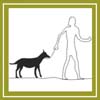From TKWB - Traditional Knowledge World Bank
Jump to navigation
Jump to search
| GENERAL DEFINITION OF THE TECHNIQUE |

|
| Technique: |
PLANT CULTIVATION AND ANIMAL DOMESTICATION |
|
Definition characters description and diffusion
The practices of plant cultivation and animal husbandry were first introduced in the Neolithic age in those areas, which are now undergoing processes of degradation and desertification.
General characters description and diffusion
The start of agriculture in tropical and subtropical environments and in arid and semi-arid climates, which were apparently the least suitable to develop it (Childe, 1954), was due to the fact that high temperature and the long sunny days are the best conditions to allow even a small strip of land to feed a significant human community. Without these convenient conditions, the first agricultural activities carried out on small areas would have been abandoned before demonstrating their potential applications on a larger scale. The farmer-breeders developed certain practices of organization of productive and sedentary life becuase of three essential conditions: the availability of fruitful seeds and domestic animals, fertile soils and water.
Advantages and sustainability
Plant cultivation and animal domestication helped humans make the transition from nomadic life to a sedentary one. This led to the creation of cities and societies that once resembled our current communities.
Images
Deepening
|
TRADITIONAL TECHNIQUE DATA
| Author: |
|
| Other authors: |
|
| Reference: |
|
|
|